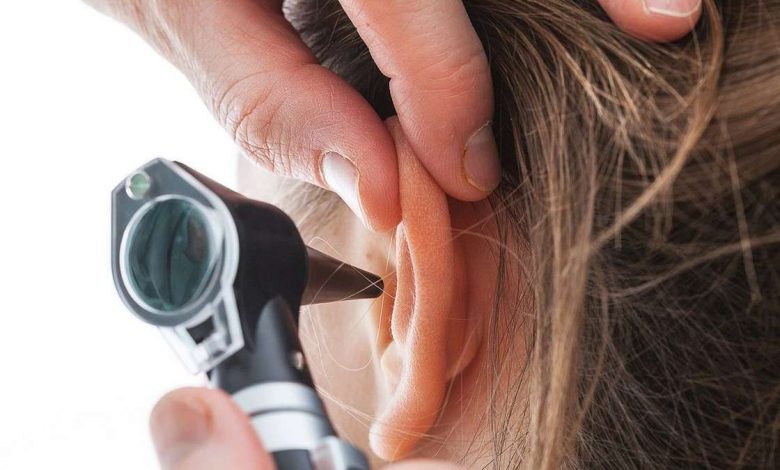Discharge from the ear: what is this, causes, symptoms, diagnostics, treatment, prevention

Ear discharge; Drainage from the ear; Otorrhea; Ear bleeding; Bleeding from ear
Discharge from the ear is bleeding, earwax, pus or fluid from the ear.
Discharge from the ear, also known as otorrhea, – is the medical term for any liquid, leaking from the ear. This could be a sign of an infection, injury or some other illness. Ear discharge can be caused by an infection, eg, ear infection, or may be a side effect of medical treatment, eg, ear tube installation. Ear discharge may be clear, yellow, green or bloody and accompanied by other symptoms, like pain, itching or hearing loss.
Causes of discharge from the ear
Ear discharge can have many causes., including infection, trauma and medical treatment. Common causes of ear discharge include:
- Infection: Ear Infections, such as bacterial or fungal infections, are the most common cause of discharge from the ear. These infections can cause ear canal inflammation, which leads to discharge.
- Trauma: Traumatic ear injuries can cause bleeding and discharge. Trauma can also cause blockage of the ear canal., which leads to fluid accumulation and discharge.
- Medical treatments: Some medical procedures, such as ear tubes, may cause discharge from the ear. ear tubes – they are small tubes, which are inserted into the ear to treat ear infections or fluid buildup in the ear.
Ear discharge symptoms
Fluid is the most common symptom of ear discharge., leaking from the ear. Liquid may be clear, yellow, green or bloody. Other symptoms of ear discharge may include:
- Pain: ear discharge may be accompanied by ear pain.
- Itch: ear may itch, especially if the discharge is caused by an infection.
- Hearing loss: Ear discharge can lead to hearing loss, if the ear canal is blocked by secretions.
Diagnosis of ear discharge
If you have any of the symptoms of ear discharge, seek medical advice. The doctor will examine your ear and may perform various tests., to determine the cause of the discharge. Tests may include a physical examination, visualization, eg, x-ray or computed tomography, as well as a hearing test.. The doctor may also take a sample of ear discharge for laboratory testing..
Ear discharge treatment
Ear discharge treatment depends on the cause.
For Example, if the discharge is caused by an infection, They can be treated with antibiotics.
If the discharge is due to a foreign object, this item may need to be removed. Perforation of the eardrum may require surgery.
If the cause is trauma, your doctor may prescribe pain medication or recommend surgery to repair the damage.
Home treatment for ear discharge
If you have ear discharge, it is important to keep the ears clean and prevent debris from getting into it. You can use a soft cloth for this., to gently wipe away secretions.
Also, don't put anything in your ear., eg, cotton swabs.
If you have pain or itching, you can take over-the-counter pain medications or antihistamines.
Prevention of ear discharge
To prevent discharge from the ear, follow these steps::
- Avoid swimming in polluted water
- Dry your ears thoroughly after swimming or showering
- Do not insert objects into the ear
- Wear ear protection during noisy events
- Clean your hearing aids and headphones regularly
In conclusion, ear discharge is a common condition, which may have various causes. It is important to seek medical attention, if you are experiencing any symptoms, as this can lead to more serious complications, if untreated. With the right treatment and preventive measures, ear discharge symptoms can be alleviated and future outbreaks can be prevented..
Sources and literature
Hathorn I. The ear, nose and throat. In: Innes JA, Dover AR, Fairhurst K, eds. Macleod’s Clinical Examination. 14th ed. Philadelphia, PA: Elsevier; 2018:chap 9.
Kerschner JE, precious D. Otitis media. In: Kliegman RM, St. Geme JW, Bloom NJ, Shah SS, Tasker RC, Wilson KM, eds. Nelson Textbook of Pediatrics. 21st ed. Philadelphia, PA: Elsevier; 2020:chap 658.
Pelton SI. Otitis externa, otitis media, and mastoiditis. In: Bennett JE, Dolin R, Blaser MJ, eds. Mandell, Douglas, and Bennett’s Principles and Practice of Infectious Diseases. 9th ed. Philadelphia, PA: Elsevier; 2020:chap 61.
Wareing MJ, Warner E. Ear, nose and throat. In: Glynn M, Drake WM, eds. Hutchison’s Clinical Methods. 25th ed. Philadelphia, PA: Elsevier; 2023:chap 22.
